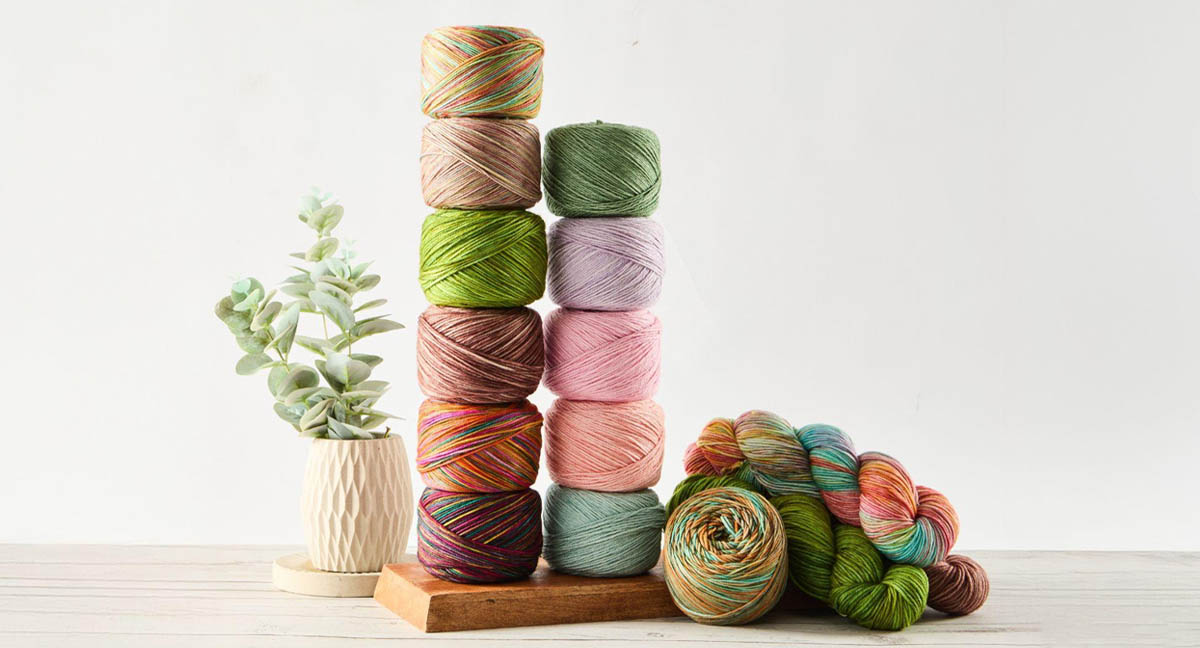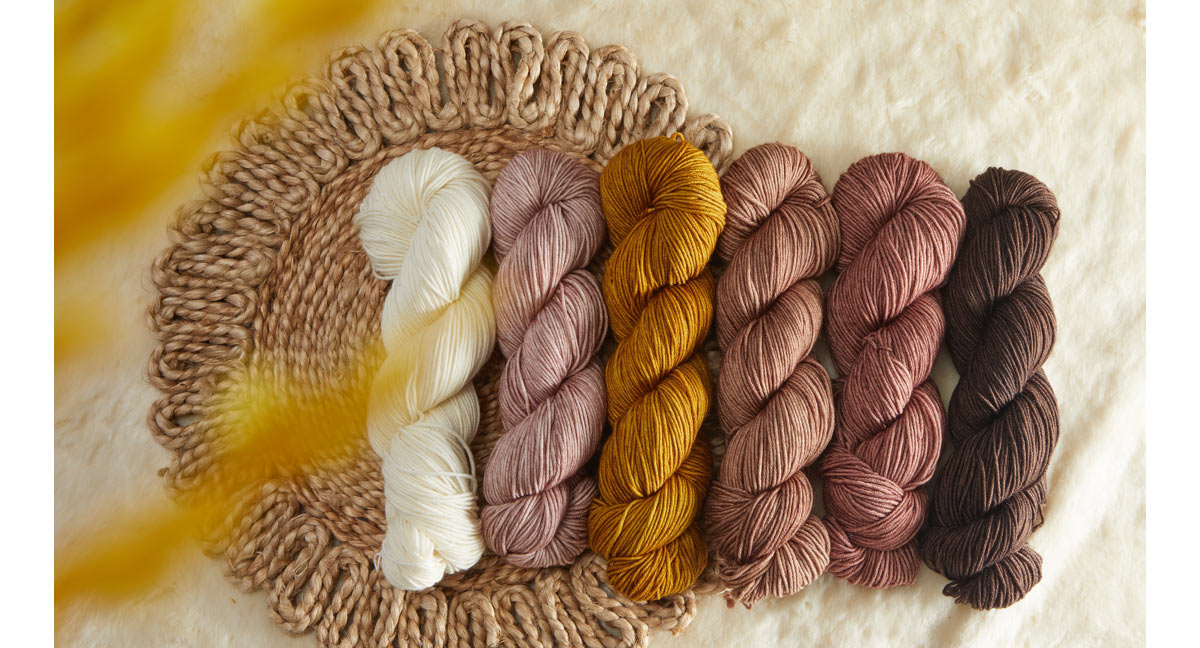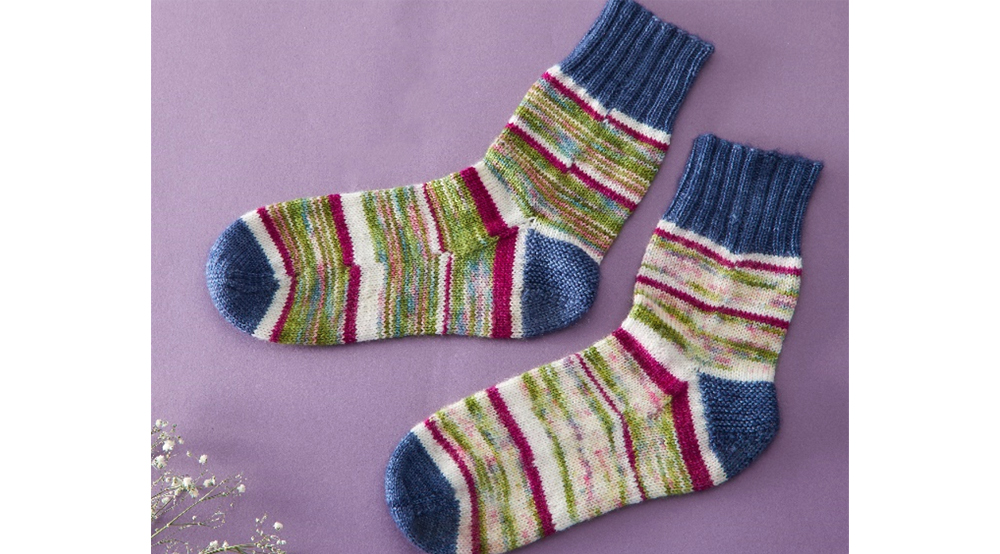How to Choose Hand-Dyed Sock Yarn for One-of-a-Kind Socks
- Blog Views : 2083
- Symfonie Yarns
- 07Jun, 2025

Sock yarn in hand-dyed shades is just the right canvas to paint your creativity. So, what do you use it for? Socks are the most obvious option. However, there’s a lot more you can knit or even crochet. When it comes to hand-dyed yarn, the options can feel overwhelming, but understanding the key factors will help you select yarn that produces stunning, long-lasting results. Whether you're a seasoned sock knitter or just starting your first pair, this blog will walk you through everything you need to know.
In this blog, we’ll cover
- What is Sock Yarn?
- Why hand-dyed yarns make extraordinary socks
- Choosing the right yarn weight for knitting socks
- Fingering weight yarn vs DK yarn
- Fiber Composition: Merino-polyamide vs Extrafine Merino Wool
- Colors and Colorways
- Making Your Final Choice
- Tips to care for hand-dyed sock yarn
What is Sock Yarn?
Sock yarn is another name for fingering weight yarn. It’s not just for socks; however, it is the most popular option for socks. The yarn weight is used for garments, including babies, mittens or gloves, hats or beanies. And, the yarn for knitting also works as the ideal choice for crochet granny squares and other projects.
Also read: Everything you need to know about Fingering Weight Yarn

Why Hand-Dyed Yarns Make Extraordinary Socks?
Hand-dyeing uses the most premium yarn fibers. Think soft yarn, such as merino wool and popular blends such as merino-polyamide yarn. So, you can be assured that the socks that are close to your skin are safe for use. Hand-dyed yarns offer something mass-produced skeins simply cannot: uniqueness. The artisanal dyeing process results in colorways with depth and character, making every pair of socks a wearable work of art.
Choosing the Right Yarn Weight for Project Success
Fingering weight yarn remains the traditional choice for sock knitting, and for good reason. This lightweight yarn creates thin, comfortable socks that fit easily inside shoes without creating bulk. Fingering weight sock yarn typically works up on US size 1-3 needles, producing a tight, durable fabric that withstands the daily wear and tear socks endure. The fine gauge also showcases intricate stitch patterns beautifully, making it perfect for cables, lace, or textured designs.
Also read: Everything you need to know about Fingering Weight Yarn
DK weight yarn offers an interesting alternative for sock knitting, particularly for those who prefer a quicker knit or need extra warmth. A common yarn weight that is often found in the stash of leftover yarn, socks made from scraps are quite handy. DK sock yarn creates thicker, cushioned socks ideal for house slippers, boot socks, or cozy winter wear. The heavier weight means faster progress on needles sized US 4-6, making socks perfect for gift knitting when time is limited. However, DK-weight socks require careful consideration of fit, as the extra bulk can make shoes feel tight and may not showcase fine stitch details as effectively as fingering-weight alternatives.
Worsted-Weight: Soft Warm Fluffiness
Soft, warm socks are a dream come true with worsted-weight yarn in extrafine merino wool. Though few knitters attempt socks in worsted-weight yarn, it’s possible to enjoy the softness and warmth.
Also read: The Ultimate Guide to Yarn Weights: Fingering, DK (Double Knit) vs Worsted

About Fiber Composition: The Foundation of Great Socks
The fiber of the yarn is the soul that breathes life into a project. Merino wool is a great choice, loved by makers for all seasons. A Merino-polyamide yarn blend is recommended for a combination of durability meets comfort. The classic sock yarn blend combines soft merino wool with durable polyamide (nylon), typically in an 75/25 or 80/20 ratio.
Merino wool provides exceptional softness, moisture-wicking properties, and natural temperature regulation, while polyamide adds crucial strength and elasticity. This combination creates socks that feel luxurious against the skin while maintaining their shape and resisting holes in high-wear areas like heels and toes. Merino wool vs merino-polyamide is quite debated; however, it depends solely on the knitter.
Merino-polyamide blends take hand-dyed colors beautifully, as the wool fibers readily absorb dye while the polyamide component adds subtle texture variation. The result is semisolid colors and variegated shades with excellent wash-fastness and minimal bleeding. This yarn blend also offers easy care, typically machine washable, making it practical for everyday wear.
Also read - How to Choose the Right Sock Yarn?
Colorways and Patterns
For the next pair of socks, explore classic color combinations. From one shade to stripes colorwork, textured designs to intricate cable patterns, simple stockinette to ribbed designs
Twilight Toes
|
Nordic Nights
|
Beach Blues
|
Also read: Knit Your First Pair of Socks
Making Your Final Choice
When selecting hand-dyed sock yarn, consider your intended use, knitting experience, and personal preferences. For everyday socks that need to withstand regular wear, choose a merino-polyamide blend in fingering weight.
Caring for Your Hand-Dyed Sock Yarns
Regardless of your yarn choice, proper care ensures your hand-dyed socks maintain their beauty and durability.
- Always follow the yarn label instructions, typically involving gentle machine washing in cool water or hand washing.
- Use gentle wool-specific detergents.
- Make use of sock blockers if your pattern has cables, intricate colorwork, lace or textured designs.
With the right hand-dyed sock yarn and proper care, you'll create beautiful, unique socks that showcase both your knitting skills and the artisan's dyeing expertise.
-
- 02 Dec,2025
-
- 27 Nov,2025
-
- 24 Nov,2025
-
- 19 Nov,2025
-
- 17 Nov,2025
-
- 10 Nov,2025
Copyright © Symfonie Yarns 2025 - all rights reserved | RSS Feed



